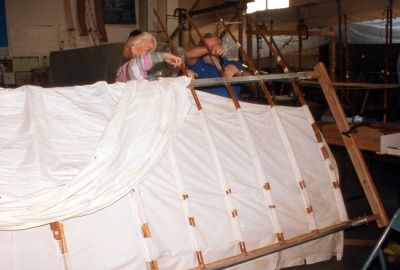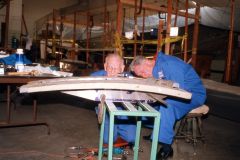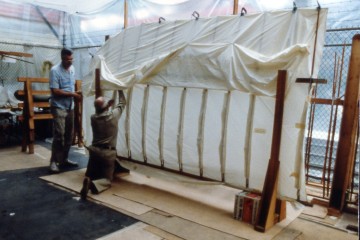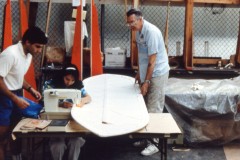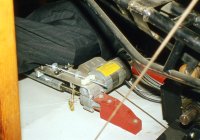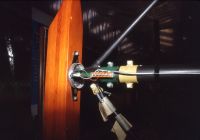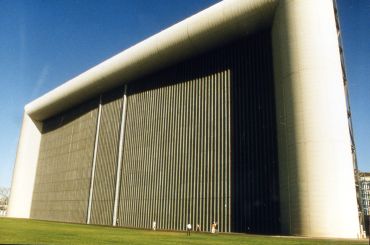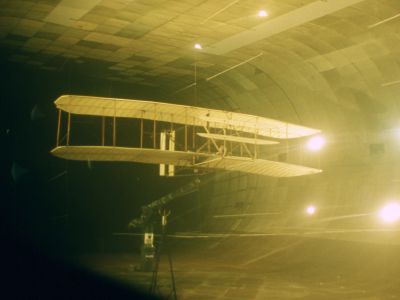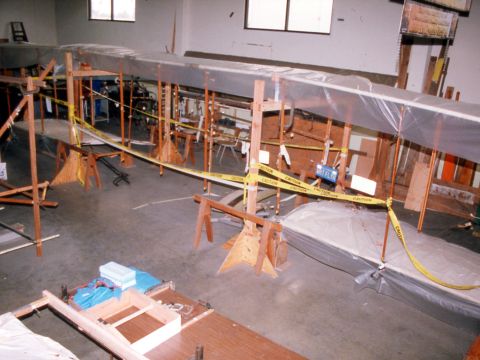
The first issue to which we had to adapt was the new loadpath imposed on our aircraft by the new mounting scheme. When an airplane is in flight, the lift produced by the wings is offset by the force of gravity, and this force is spread out along the aircraft's wings, fuselage, engines, etc. When a model is being tested in a wind tunnel, while some of the lift is counteracted by gravity, most of the forces are concentrated around the support structure, which in this new case would be a single point underneath the center of the replica. Thus, the spars and ribs of the center section would have to react the full force of the lift of the airplane, which would be greater than the weight of the replica.
In order to accomplish this and to satisfy the NASA safety requirement of being able to safely tolerate loads three times higher than we expected, our structural analysis showed that we would have to replace the wooden spars in the lower center section with aluminum parts. Shown above is our aircraft with the section to be modified removed, and below are Rich Grimm and Marilyn Ramsey are carefully reattaching the aft ribs to the new aluminum spar. Once they are done, the front wooden spar will also be replaced.
